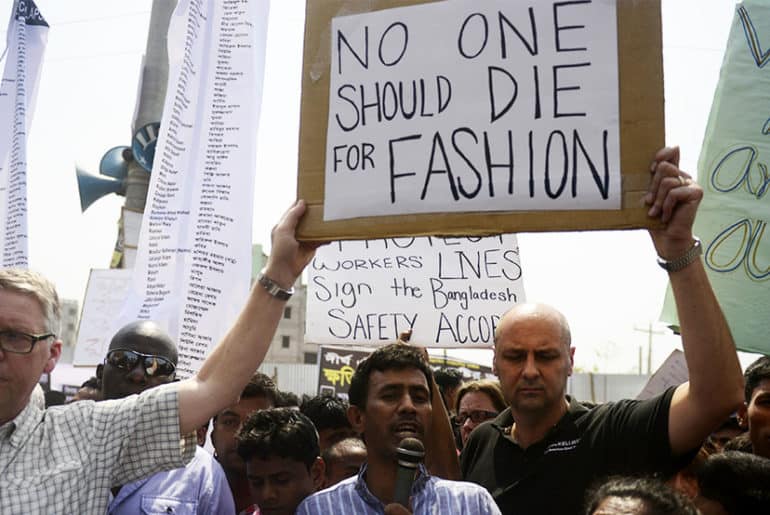Fast-fashion is our guilty pleasure. We scrounge across the aisles of Forever 21 and H&M looking for that velvet crop top, knowing all too well that will be out of fashion in the next six months. The cost of fast fashion is not just monetary; it is a drain on our planets finite resources and promotes wastefulness.
Fast-fashion is addictive and the rise of social media, especially Instagram stories has made it even more important. Now that most people know what we are up to, at all times, looking good and dressing well has become even more important. The temptation of fast fashion is understandable, you can now dress like Chiara Ferragni but at a fraction of the price. This has led to the rise of an entire industry that mass-produces cheaply made clothes, often tweaked replicas of what fashion influencers appear to be wearing and sell it at a inflated prices. We end up buying these pieces, knowing well that they are shoddily made and will not stand the test of time simply because the temptation to dress fashionably is too strong.
This has resulted in us owning a large number of clothes that quickly go out of style and crowd our wardrobe. Fast fashion makes us look like clones without any sense of individuality. We are all shopping at the same place, for the same things after all. However, the biggest price for fast fashion is paid by planet earth, not us. Fast fashion churns and burns clothes at an alarming rate and our planet simply cannot afford this kind of wastefulness and greed. According to Forbes, the rising demand for cotton is making cotton producing countries prioritise cotton production over providing clean water to its citizens. Water pollution, landfills full of clothes in styles that have now become redundant, toxic waste being released in rivers, are all results of fast fashion. Polyester, a popular choice of fabric in fast fashion releases micro-fibers that end up polluting our oceans. Fast fashion clothes are often sent to third world countries where they eat up the market of local businesses thus contributing to more unemployment. The biggest problem with fast fashion is how it treats its workers. Since companies compete with each other to sell the latest piece at the cheapest price, they end up cutting corners in terms of wages to employees. These clothes come from sweatshops in countries like Bangladesh, where ceilings fall in such workhouses and employees are paid pennies for the dollar.
Fast-fashion on its surface looks glittery and glamorous. It makes us think of well-lit stores, dainty tops, and affordable clothing but in reality, it is an ugly industry that abuses and manipulates impressionable teenagers, promotes wastefulness, and drains the resources of the planet. Fast-fashion deserves to be boycotted for its blatant abuse of underage women in Bangladesh, all the while hypocritically printing t-shirts that read “Feminist AF”. It is now time we look at things beyond face value. Multi-nationals worth billions would go to great lengths to hide their dirty secrets. It rests upon us to make the effort of putting our money where our mouth is.
Feature Image Credits: Europarl TV
Kinjal Pandey





Comments are closed.